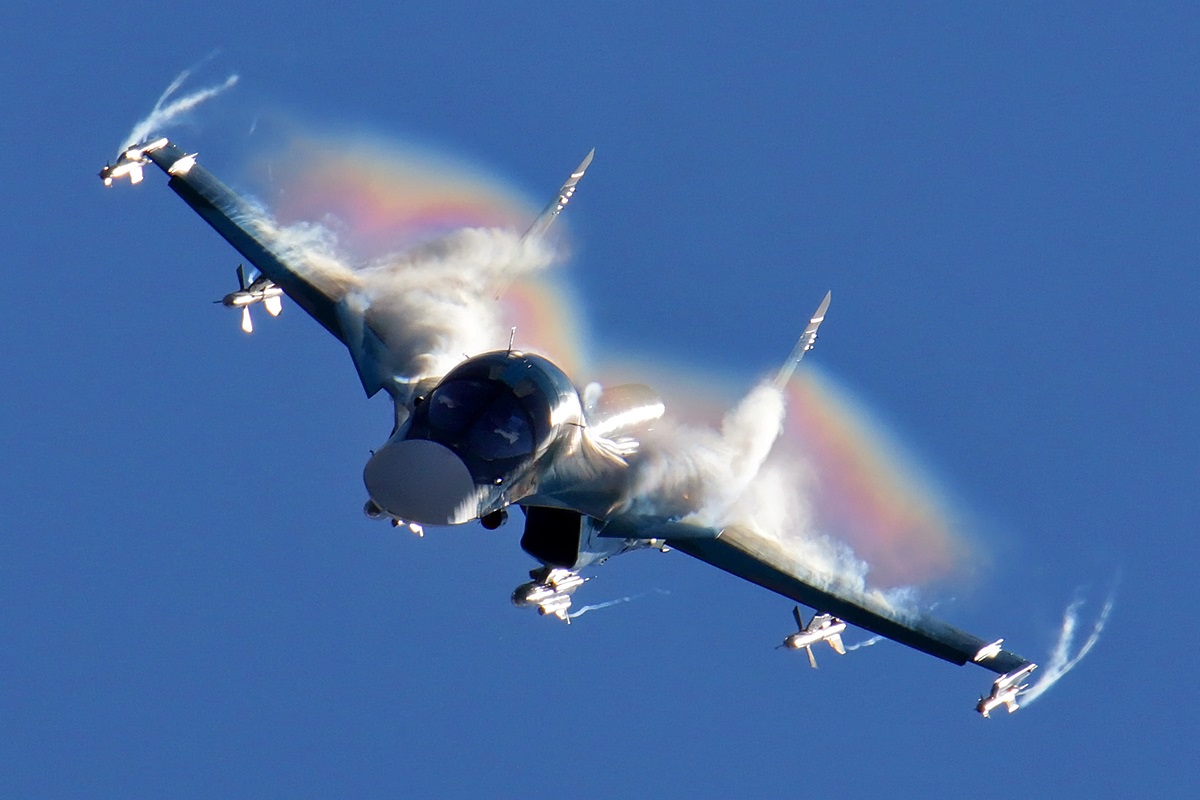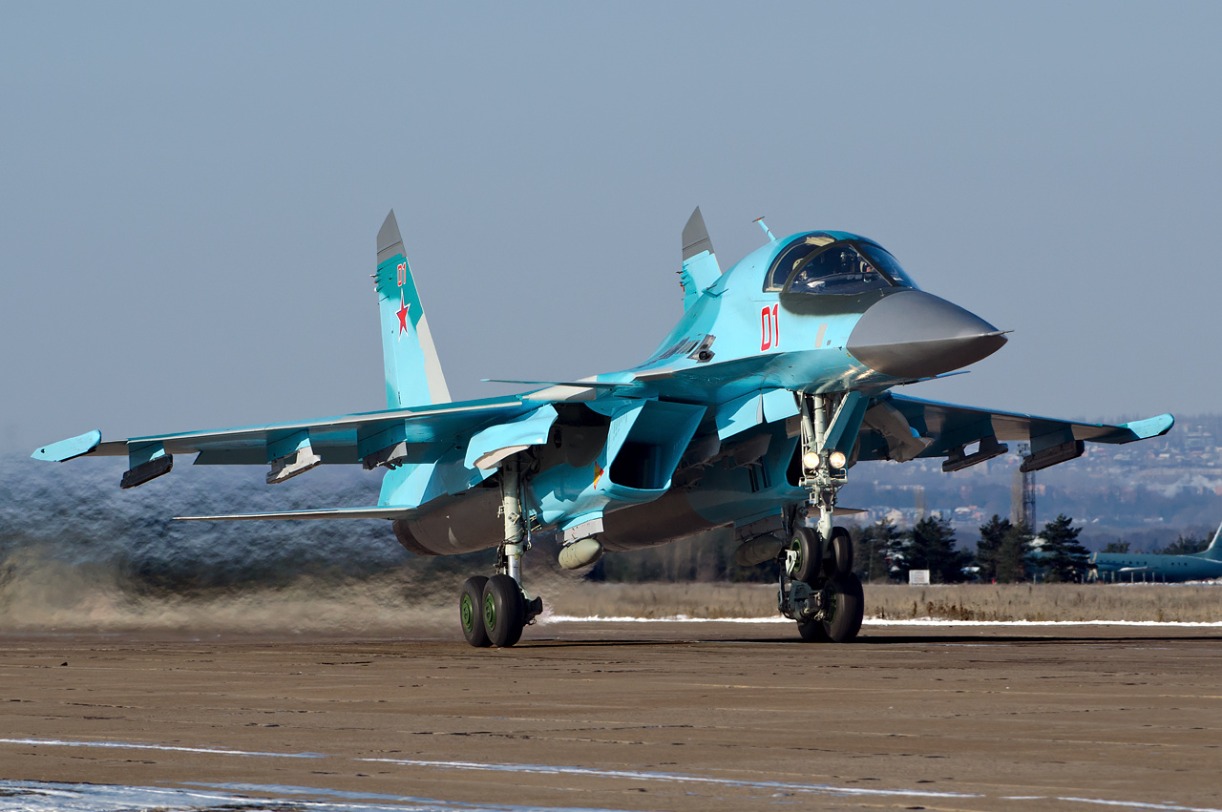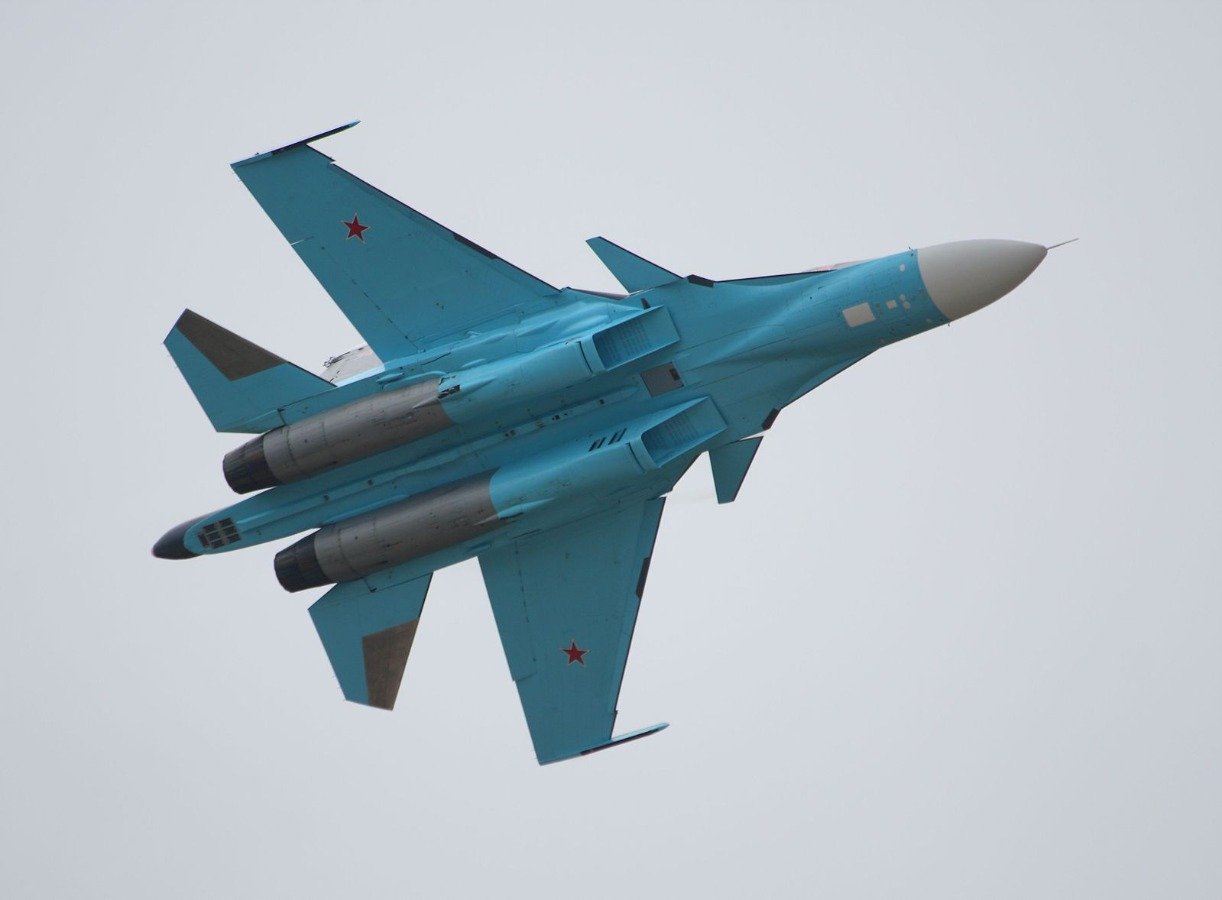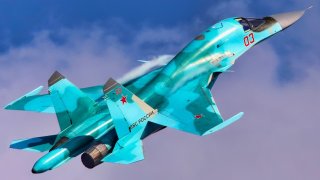Russia Is Making a Big Bet on the Su-34 Fullback Fighter Bomber
The Su-34 Fullback, a Soviet-era twin-engine, twin-seat fighter/bomber, officially entered Russian service in 2014 after prolonged development. Designed as an advanced variant of the Su-27, the Su-34 features a heavily armored cockpit and versatile capabilities, including several specialized variants for maritime strike, reconnaissance, and electronic warfare.
Summary: The Su-34 Fullback, a Soviet-era twin-engine, twin-seat fighter/bomber, officially entered Russian service in 2014 after prolonged development. Designed as an advanced variant of the Su-27, the Su-34 features a heavily armored cockpit and versatile capabilities, including several specialized variants for maritime strike, reconnaissance, and electronic warfare. Despite its advanced design, the Su-34's combat performance has been mixed, particularly in Ukraine, where it has primarily been used as a tactical bomber.
Key Points
-The Fullback's vulnerabilities have been exposed by advanced air defense systems like Patriot and NASAMS.
-The Su-34's effectiveness continues to be debated, with future assessments dependent on evolving combat experiences.
Su-34 Fullback: Evaluating Its Performance in Ukraine
The Su-34 is a Soviet-era twin-engine, twin-seat, supersonic, all-weather, medium-range fighter/bomber strike warplane. It first took flight in 1990, but with the collapse of the Soviet Union and the end of the Cold War, the Su-34 was stuck in development hell for 14 years thereafter.
The Su-34 Fullback fighter-bomber finally went into active service for the Russian Aerospace Forces in 2014. The Fullback, despite its impressive appearance and its ubiquity in Russia’s air force, has a mixed performance record in combat.
An augmented version of the Su-27, another classic Soviet-era warplane, the Fullback has a heavily armored cockpit (much like the U.S. Air Force A-10 Warthog). According to the U.S. Army’s TRADOC website, the Su-34 is meant to replace the much older Su-24 tactical strike fighter, as well as the Tu-22M3 long-distance bomber.
The Different Variants of the Su-34 Matter
There are five variants of the Fullback.
First came the Su-27IB/Su-34 fighter-bomber, which was meant to replace the Yak-28PP and the Su-24MP.
The Su-34FN maritime strike plane was originally designed to be a maritime aviation variant. This is the primary export model of the Fullback. The Sea Snake radar system, other anti-submarine-warfare systems, a radio sonar buoy, and a magnetic anomaly detector are all found on the Su-34FN.
Then there’s the Su-34 reconnaissance bird that possesses the side-looking radar feature as well as photo recon equipment and other surveillance systems.
The Su-34 Electronic Warfare/Su-32 Escort Jammer is the final variant of this model, still under development. It can carry up to four podded jamming devices and two anti-radiation missiles, making it a dangerous player on any battlefield.
Su-34 General Specifications are Important
Two Saturn AL-35F engines power the Su-34, providing 30,866 pounds of thrust in each engine. This warbird can travel at Mach 1.5 (or about 1,180 miles per hour).
For general armaments, there are 12 hardpoints on the wings of the Su-34 as well as underneath the fuselage of the warplane.
The Su-34 possesses a single, 30mm GSh-301 single-barrel cannon that can fire 1500 to 1800 rounds per minute. The Su-34 carries two R-27R air-to-air missiles as well as two more R-73 and R-77 air-to-air missile systems. It also carries air-to-surface munitions such as the Kh-29L, while its anti-ship missiles belong to the Kh-31A/AD and P-800 Oniks classes.
Russia’s Doctrinal Woes
Although it can be used as an air superiority fighter, the Su-34 has been used most as a tactical bomber. This has been its primary role as part of the Russian mission supporting Bashar al Assad’s Syrian Arab Army in the Syrian Civil War. Likewise, the Su-34 has been mostly used as a bomber over Ukraine.
It is in that role of bomber that the Su-34 has suffered most of its losses in Ukraine. As Stavros Altamazoglou explained, the “Su-34s fly in small numbers as Russian doctrine isn’t designed to support large-scale air operations at the same time.”
Interestingly, reports have surfaced that Ukraine has been using Patriot missile batteries and NASAMS air defense systems on the frontlines to target incoming Russian warplanes.
Because the Su-34s and other Russian aircraft operate in smaller groups when conducting tactical bombing missions, they are more likely to be destroyed by these systems than if they were to be attacked while operating in a larger formation.
The Way Forward for Russian Air Power?
The record for the Su-34 in Ukraine is mixed. But how much of that is because of faulty Russian doctrine, and how much because it is a bad bird?
Historians will be the judges. For now, the Russians have made their big bet on the Su-34, and they’re sticking to it.
Su-34 Fullback Photo Essay



About the Author
Brandon J. Weichert, a National Interest national security analyst, is a former Congressional staffer and geopolitical analyst who is a contributor at The Washington Times, the Asia Times, and The-Pipeline. He is the author of Winning Space: How America Remains a Superpower, Biohacked: China’s Race to Control Life, and The Shadow War: Iran’s Quest for Supremacy. His next book, A Disaster of Our Own Making: How the West Lost Ukraine, is due October 22 from Encounter Books. Weichert can be followed via Twitter @WeTheBrandon.


